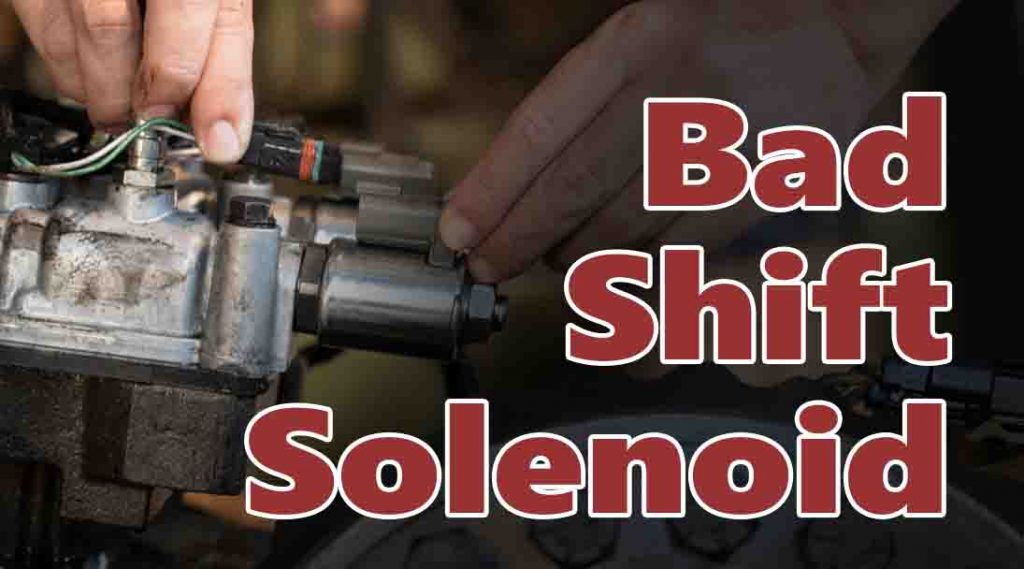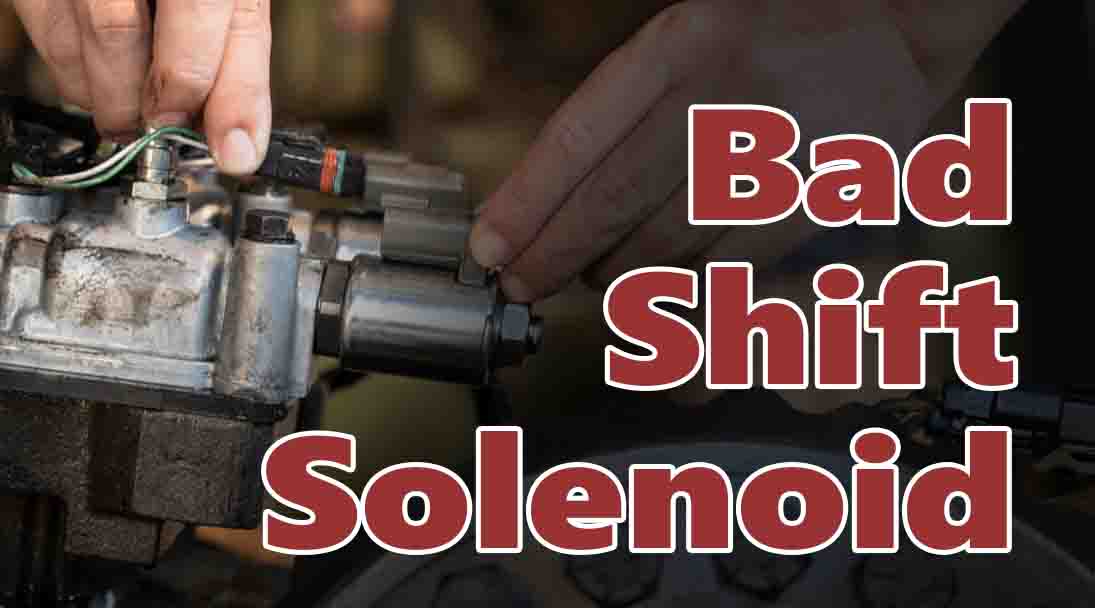When you put your car into park and shift into neutral, it’s the solenoid that takes care of shifting for you. When your gearbox is overheating, there’s no way to tell whether the problem is caused by a bad shift solenoid or a blown fusible
You have a couple of things to check before you decide that you need to call in the transmission shop. Do you have trouble shifting or error messages in your dash? The transmission solenoid is a part that can cause a lot of strange problems with your automatic transmission if one is faulty. Replacing a shift solenoid may be costly, so it’s a good idea to make sure you don’t replace a functional shift solenoid
This is a guide that will teach you the common symptoms, location, and how to diagnose it.

Table of Contents
7 Bad Shift Solenoid Symptoms
The most common symptom of a bad shift solenoid is shifting problems with your automatic transmission. It could also indicate that the oil, air filter, and/or transmission fluid need to be changed.
Check Engine light
All bad shift solenoid symptoms will be noticed when the check engine light comes on. The check engine light should be on even if there’s a problem with the transmission.
A code P0700 usually means that the oil filter needs to be replaced or changed. It will lighten up, and you’ll see a P0700 Trouble code. If you have an automatic car or truck, you should check the transmission fluid level to see if there is a leak.
Transmission Warning Light
In some cars, a separate transmission warning light may be available. If the battery light is on on your car, it might be a problem with the wiring harness.
A transmission control module diagnostic is an easy way to read the trouble codes. You only need an OBD2 scan tool to read generic and enhanced trouble codes. You need a cheap engine tester that can read the codes from the engine control module.
Shifting delays
A slow shifting transmission is caused by a problem with the transmission shift solenoids, which are used to shift the transmission between gears. This works for both upshifting and downshifting.
Skipping gears
Your car may have a problem engaging some gears, which will cause it to skip to the next gear. If you’re seeing this, then you have transmission shift solenoid problems. There are often a few of these in any car that’s out of warranty, and they are most likely responsible for why your vehicle is having issues shifting.
Stuck in gear
In the case that the shift solenoid was damaged while the transmission was engaged, it might cause the transmission to be stuck in that gear. If your car doesn’t start, the first thing you need to do is find out why.
Downshift or Upshift Issues
It’s possible you have intermittent problems with the transmission shift solenoid, which could cause shifting problems. This clutch can cause the engine to overheat, resulting in engine damage if left unchecked.
Limp mode
It’s possible to limp-mode your engine, and this is a safety feature to prevent damage to your engine if it starts to lose power. When you hear the transmission shift into gear, but there is no engine movement, that usually means the transmission is slipping into limp mode.
Transmission Shift Solenoid Function
Transmission shifter’s job is just like it sounds: it shifts the gears. The TCS gathers data from the engine, vehicle speed sensors, and other sensors. The engine control module uses all of these parameters to determine when it’s time to shift to the next gear.
A transmission control unit sends a power or ground signal to the required shift solenoid, which causes it to open and let the transmission oil flow into the valve body, which then shifts to the next gear.
Transmission Shift Solenoid Location
There’s a lot more to the automatic transmission than meets the eye. Some cars offer more features than others, but all models have a few basic features in common. For example, most cars are powered by the engine and transmission, and they include steering wheel, pedals, and seats.
Here’s the picture of the shift solenoids on the valve body. The shift solenoids are the three tubes with the colors yellow, green, and black.
Transmission Shift Solenoid Replacement Cost
For a shift solenoid replacement, you must know what kind of car you have. The replacement cost depends a lot on the car model and transmission model.
Some cars have multiple solenoids, which means you can usually get away with just replacing one. You don’t just replace the solenoid and the valve body, but also the whole control unit which is very expensive.
It’s important to replace both the transmission fluid and filter when replacing any part in a diesel truck transmission. These are the prices, including parts and labor. The prices don’t include diagnostic testing and intravenous (IV) replacement fluids.
It depends on the parts and transmission fluid you are using. Aftermarket parts can be cheaper, but they are generally not of the same quality as original parts. The original parts are more expensive, but will last longer.
How to Diagnose a Shift Solenoid Problem?
First, you have to find out if it’s a wiring, shift solenoid, TCM, or mechanical problem.
Before starting the troubleshooting, you need to read and research the trouble codes to understand the problem so you can start troubleshooting Some of the codes you might see here include a stuck gear or shift solenoid.
A common problem with a shifter in an automatic transmission is that of a ‘transmission code. You can save a few bucks with a transmission fluid change, which is often worthwhile. Diagnosing shift solenoid related problems is necessary, as using an on-board diagnostic scanner will help you detect any issues
This is a list of the ways to troubleshoot a scanner.
Find a transmission wiring diagram for your transmission. Find out which pin is connected to the affected shift solenoid.
If the transmission is shifted into P or N position, pull out the wire connectors for both the transmission and the steering rack from the steering column by using a small screwdriver.
Measure the voltage and current with a multimeter to make sure that you get both 12 volts and a ground to the shift solenoid.
If you do not get 12 volts at the negative pole or ground at the positive pole, it may be a bad wiring problem or a faulty TCM (transmission control unit).
FAQs
It’s not a good idea to drive your car when you have a faulty shift solenoid, but you can probably do it. You should avoid this.
A faulty shift solenoid can cause more damage to your transmission, and that will be more expensive than repairing the shift solenoid immediately.
Replace a shift solenoid in your own vehicle depends entirely on what car model you drive and how much knowledge you have.
Some shift solenoids are fairly easy to replace, by removing the transmission and valve body, with help of a repair manual.
It’s a bit difficult to replace the solenoid in most car models, and you may need a computer afterward to adjust it.
Some stuck shift solenoids are easy to repair, but others require a new part and a transmission fluid flush.
You will have to replace the stuck shift solenoid, in most cases, if a flush isn’t helping.
There are usually 2 to 5 shift solenoids in most automatic transmissions. Each shift solenoid is responsible for turning one of the transmission gears.
Clutches have multiple purposes, and their primary function is to control the flow of hydraulic fluid to the clutch packs in the transmission, which allow for shifts between gears.

